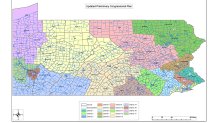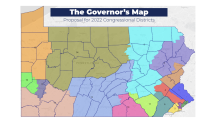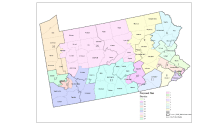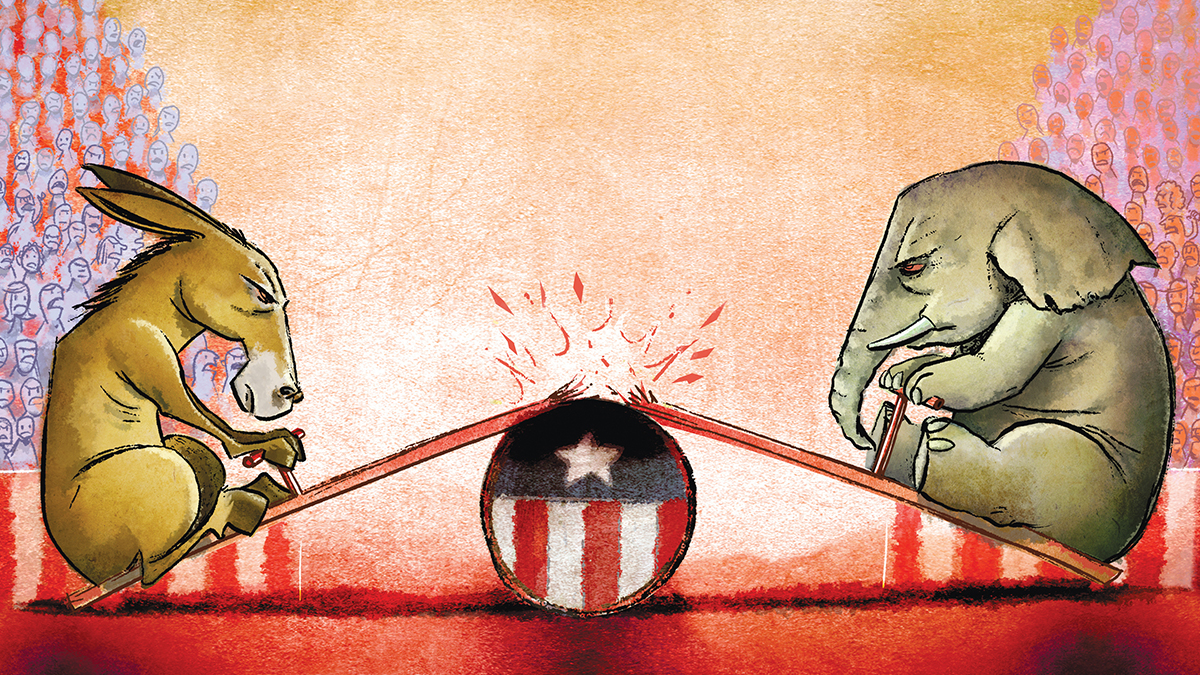A battle over Pennsylvania's 17 congressional districts for the next decade is entering the final stage, with several potential maps now submitted to the state's second-highest court in a competition of which is most fair for 8.7 million voters.
The maps include those submitted by Republican legislators, Gov. Tom Wolf's administration, concerned citizens and math and science professors at universities across Pennsylvania. In all, 13 groups submitted maps to the Commonwealth Court on Monday.
The court fight has erupted because the state legislature, which is controlled by Republicans, and the Democratic governor have failed to reach an agreement on a map.
The stalemate could actually be a good thing for voters, according to some fair elections advocates. It has opened up debate about whether lawmaker-created maps are fair or whether the maps were manipulated to favor politicians, also known as gerrymandering.
Get top local stories in Philly delivered to you every morning. Sign up for NBC Philadelphia's News Headlines newsletter.
The Commonwealth Court has given the legislature and the governor until Jan. 30 to come to an agreement. If that deadline arrives without a map, the court will decide by next week on a new map from those submitted Monday.
The 2022 elections in Pennsylvania feature rare open races for the offices of U.S. senator and governor, which will impact policies statewide. Current U.S. Sen. Pat Toomey is not running for a third term and Wolf is not allowed to run for a third term. Dozens of candidates are running to fill those seats.
Here's a look at some of the maps, and who submitted them:
Republican State Lawmakers' Map
The GOP lawmakers' map was created by a former Republican Lehigh County commissioner. Amanda Holt, of Allentown, is a database manager and piano teacher who has been involved in the state's redistricting process for a decade.

Gov. Tom Wolf's Map
The Wolf administration's map was created by Moon Duchin, a mathematician and professor at Tufts University in Massachusetts. Duchin runs the MGGG Redistricting Lab at the Tufts.

Mathematicians' Map
Twelve mathematicians from universities across Pennsylvania filed a lawsuit last year to request that the Pennsylvania courts supercede the state legislature and Gov. Wolf to create the new map of congressional districts. The professors collaborated to create their own map using computer modeling.

Carter Map (Submitted by a Group of Citizens)
In addition to the mathematicians, a group of voters also filed a lawsuit last year to request that the Pennsylvania courts supercede the state legislature and Gov. Wolf to create the new map of congressional districts. The Commonwealth Court granted both groups the right to submit maps. The Carter group used a "least-change" approach to creating their map, which works off the 2018 congressional districts map adopted by the state Supreme Court following a 2017 lawsuit. Their map was created by Jonathan Rodden, a political science professor at Stanford University and director of the university's Spatial Social Science Lab.

Congressmen's Map
U.S. Rep. Guy Reschenthaler, who represents Pennsylvania's 14th congressional district, along with three former congressmen, were allowed by Commonwealth Court to submit a map. Below is one of two maps that the group submitted for consideration.

What is the Purpose of Redistricting?
Redistricting is the constitutionally required redrawing of maps for congressional districts and state legislative districts in all 50 states. It is done in the year after the U.S. Census, which is conducted once a decade. All congressional and state legislative districts are required to represent an equal amount of voters.
In Pennsylvania, there are now 17 congressional districts, down from 18 two years ago. The state lost a seat in Congress because of population loss between 2010 an 2020. There are 203 state House districts, with each representing 62,573 residents over the last decade, and 50 state Senate districts, with each representing 254,048 residents following the 2010 Census.
The current redistricting process began late last year and involves two simultaneous efforts: drawing a new map for the congressional seats and drawing a new map for the state legislative seats.
Pennsylvania's current law requires a five-member panel to approve state legislative maps. The panel consists of two people appointed by Republican state lawmakers, two people appointed by Democratic state lawmakers and a chairperson appointed by the Pennsylvania Supreme Court.
Decision 2022
That panel is expected to release its final state legislative map any day now. A court battle over that map is also possible, experts say.
The congressional and state legislative maps have to be in place by mid-February in order for candidates and county election offices across Pennsylvania to get ready for the May 17 primary election.
Any further delay in finalizing the maps could result in a rescheduling of the primary. That is not expected to affect the Nov. 8 general election.




